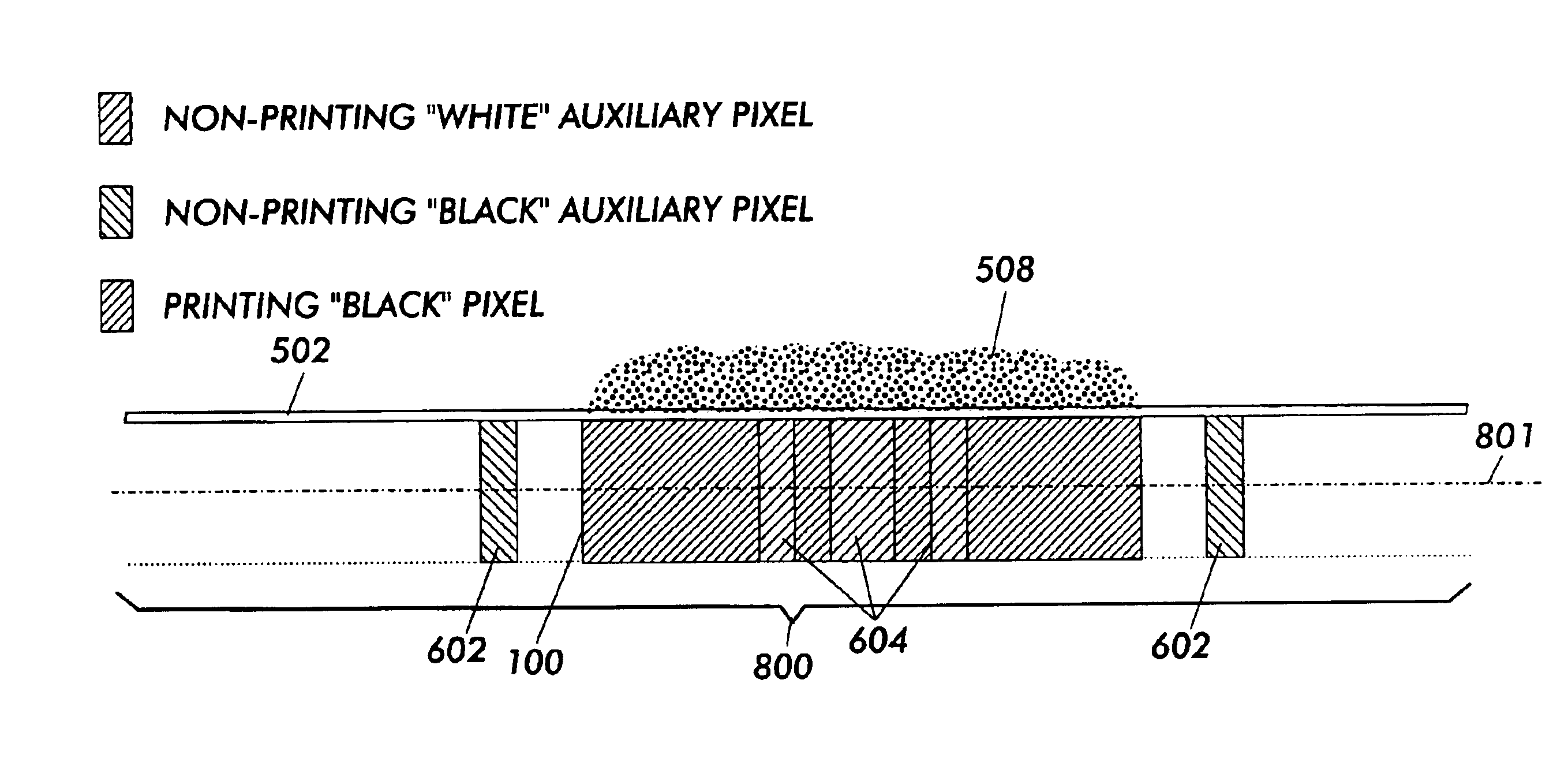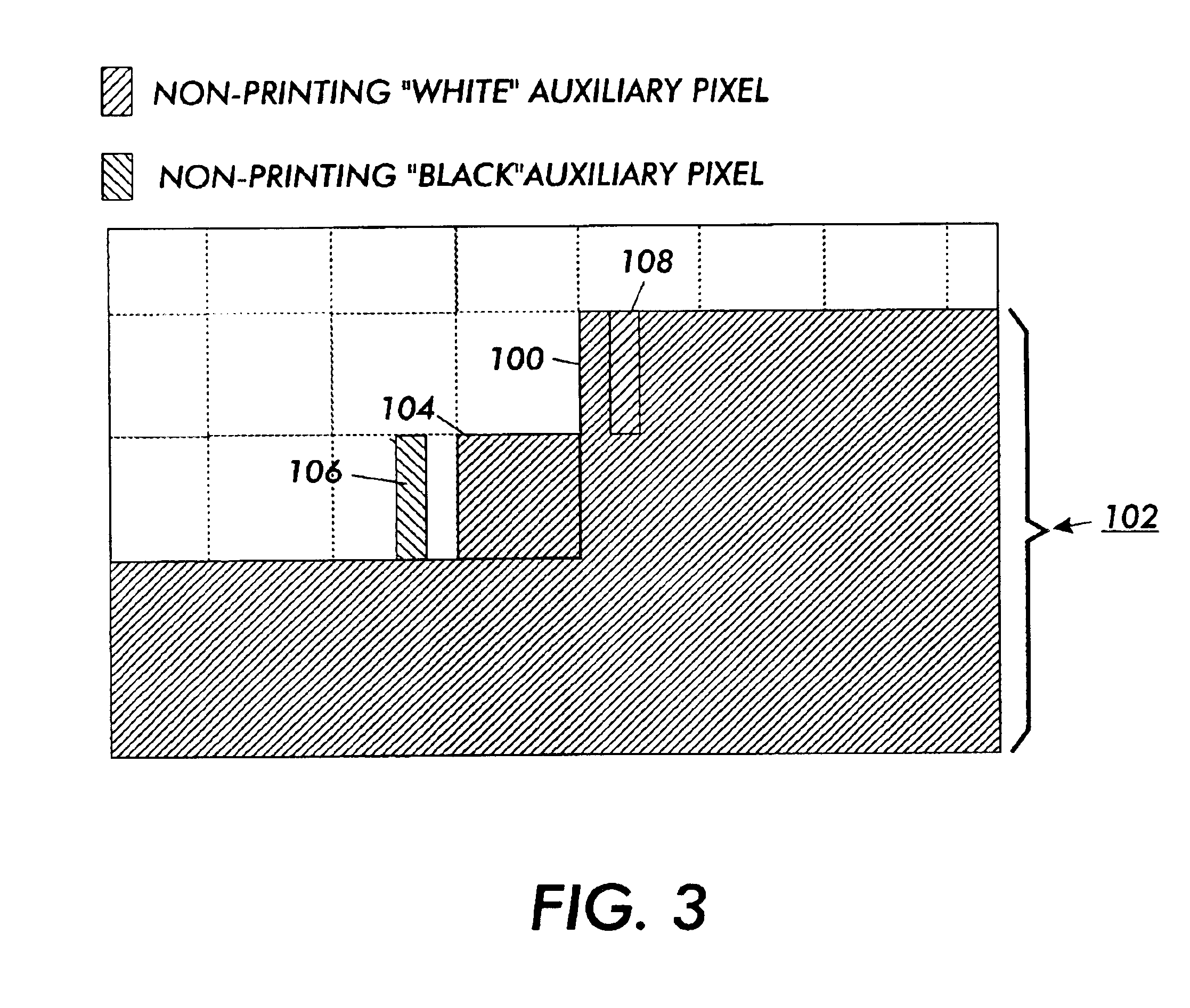Auxiliary pixel patterns for improving print quality
a technology of auxiliary pixels and print quality, applied in the field of improving images, can solve the problems of thin lines and narrow shapes, exhibit a defect called halo, shrinkage of lines, etc., and achieve the effect of satisfying printing and improving the rendition of document images
- Summary
- Abstract
- Description
- Claims
- Application Information
AI Technical Summary
Benefits of technology
Problems solved by technology
Method used
Image
Examples
Embodiment Construction
[0031]For a general understanding of the present invention, reference is made to the drawings. In the drawings, like reference numerals have been used throughout to designate identical elements. In describing the present invention, the following term(s) have been used in the description.
[0032]An “image” is a pattern of physical light. It is understood that an image may be further comprised of shapes. An image as such, may include characters, words, and text as well as other features such as graphics. An image may be divided into “segments” or “regions”, each of which is itself an image. A region of an image may be of any size up to and including the whole image.
[0033]An item of data “defines” an image when the item of data includes sufficient information to produce the image. For example, a two-dimensional array can define all or any part of an image, with each item of data in the array providing a value indicating the color of a respective location of the image.
[0034]Each location ...
PUM
 Login to View More
Login to View More Abstract
Description
Claims
Application Information
 Login to View More
Login to View More - R&D
- Intellectual Property
- Life Sciences
- Materials
- Tech Scout
- Unparalleled Data Quality
- Higher Quality Content
- 60% Fewer Hallucinations
Browse by: Latest US Patents, China's latest patents, Technical Efficacy Thesaurus, Application Domain, Technology Topic, Popular Technical Reports.
© 2025 PatSnap. All rights reserved.Legal|Privacy policy|Modern Slavery Act Transparency Statement|Sitemap|About US| Contact US: help@patsnap.com



